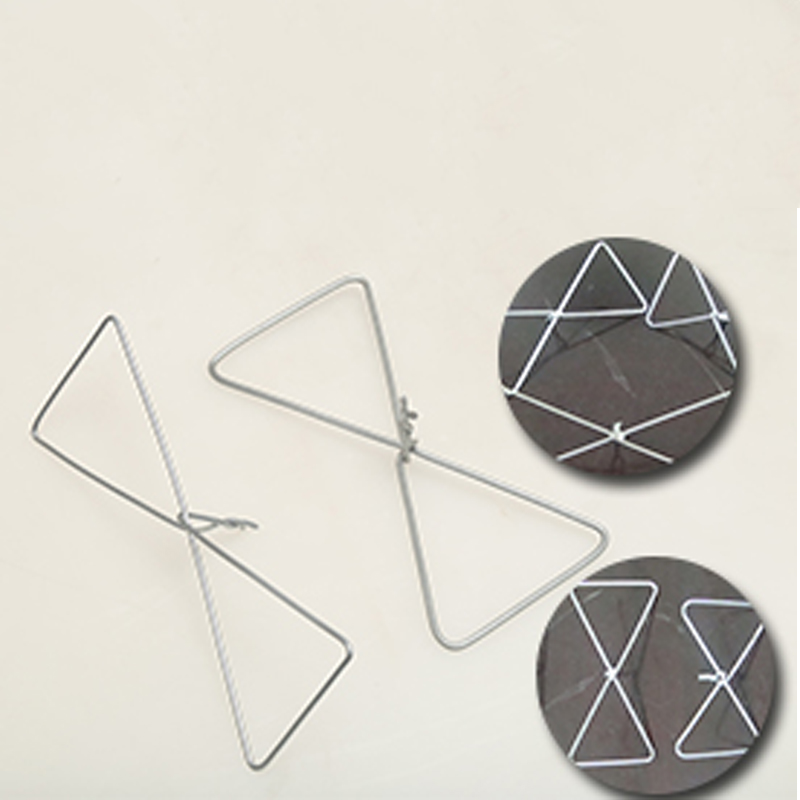
- Mobile Phone
- +8613931874955
- sales@cntcmetal.com
types of cavity wall ties
Types of Cavity Wall Ties An Overview
Cavity wall ties are crucial components in the construction of cavity walls, which are widely used in modern buildings for their structural integrity, insulation properties, and aesthetic flexibility. The primary purpose of wall ties is to connect the outer leaf of a cavity wall to its inner leaf, ensuring stability, resisting wind pressure, and providing support against lateral forces. This article discusses the various types of cavity wall ties, focusing on their materials, designs, and applications.
1. Types of Materials
Cavity wall ties are primarily made from three types of materials stainless steel, galvanized steel, and plastic. Each material type has its unique properties that make it suitable for specific applications.
- Stainless Steel Ties Stainless steel is known for its resistance to corrosion, making it an ideal choice for damp or coastal environments. Stainless steel ties are durable and have a long lifespan, which makes them a popular option in high-quality construction. They often come in different grades, with Grade 304 and Grade 316 being the most commonly used in construction.
- Galvanized Steel Ties Galvanized steel ties are coated with a layer of zinc to protect them from corrosion. These ties are commonly used in less aggressive environments where moisture exposure is limited. Galvanization provides a cost-effective solution while ensuring adequate durability. However, they may not perform as well as stainless steel ties in coastal or highly humid areas.
- Plastic Ties Plastic cavity wall ties are made from high-strength polymers and are often used in low-rise buildings. These ties are lightweight, resistant to corrosion, and have thermal properties that help reduce thermal bridging. However, their structural capabilities must be evaluated as they are typically less robust than metal ties.
2. Types of Designs
Cavity wall ties come in various designs, each tailored to specific structural needs and building regulations
- Flat Ties Flat ties are the most common type and are used for connecting the two leaves of a cavity wall. They provide adequate tensile strength and can be easily secured to masonry units. Often, they are designed in specific lengths to accommodate various cavity widths.
types of cavity wall ties

- Z-shaped Ties Also known as “Z-ties,” these are designed with a bend in the middle that allows for better flexibility in applications where movement might occur within the wall structure. They are particularly useful in seismic or dynamic situations.
- Swaged Ties Swaged wall ties have a specific design where one end is thinner than the other, allowing for a mechanical interlock. This design enhances their load-bearing capacity and provides a strong bond between the leaves of the wall.
3. Applications
The selection of cavity wall ties often depends on the building’s specific requirements, including height, exposure to elements, and structural considerations.
- Residential Buildings In residential construction, cavity wall ties are typically used in two-leaf brick or block walls. Depending on the height of the building and local building codes, the spacing and type of tie can vary.
- Commercial Structures For larger commercial structures or high-rise buildings, more robust ties such as stainless steel or swaged types are essential to ensure stability and compliance with safety regulations. These ties must also meet the rigorous demands of larger wind loads.
- Renovations and Retrofits Cavity wall ties can also be critical in renovation projects where existing ties may be deteriorating over time. Retrofitting with newer materials or designs can significantly enhance the structural integrity and longevity of older buildings.
Conclusion
Understanding the various types of cavity wall ties is essential for both builders and architects to ensure the structural stability and durability of cavity walls. The choice of material and design must be aligned with the specific requirements of the building project, environmental conditions, and compliance with building codes. As technology advances, new materials and innovative designs continue to emerge, providing enhanced performance and greater longevity in cavity wall construction.
share:
-
Why Sacrificial Formwork Is Redefining Underground ConstructionNewsJun.06,2025
-
The Structural Dynamics of Modern Concrete: How Snake Spacers Revolutionize Flexible ReinforcementNewsJun.06,2025
-
Snake Spacers Smart-Lock Concrete Reinforcement with Surgical PrecisionNewsJun.06,2025
-
Snake Spacers: Reinforcement Precision for Modern Concrete ProjectsNewsJun.06,2025
-
Snake Spacers Powering Concrete's Structural DNANewsJun.06,2025
-
Slither into Success: Snake Spacers' Precision Bite for Unbreakable ReinforcementNewsJun.06,2025
-
Sacrificial Formwork: Building Stronger, Faster, and Safer StructuresNewsJun.06,2025



















